This blog been written by a member of the Newground Flood Team.
Often, many people associate flooding with rivers overtopping their banks and don’t consider their risk of flooding from surface water. Surface water flooding threatens more people and properties than any other type of flood risk and can happen many miles from a river or stream, often in areas where people wouldn’t expect.
Surface water flooding is also known as pluvial flooding. It occurs when the volume of rainfall exceeds the capacity of drains and surface water sewers and is unable to drain away through drainage systems or soak into the land, and instead flows over the land. The intensity of this flooding can be increased by blocked road gullies, drains and sewers, saturated and waterlogged land, and an increase in hard surfaces.
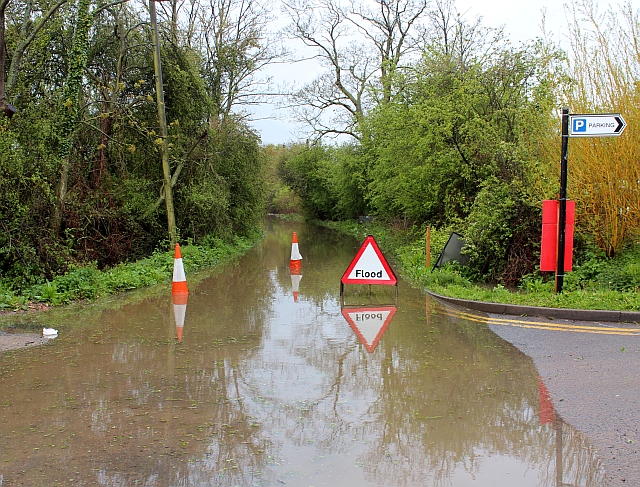
New Street flooded cc-by-sa/2.0 – © Bob Embleton – geograph.org.uk/p/2922279
You can check whether you’re at risk from surface water flooding by visiting: Where do you want to check? – GOV.UK (check-long-term-flood-risk.service.gov.uk) and typing in your postcode. The map shows the risk of surface water flooding for where you live, and you can also find out what other types of flooding you may be at risk from.
From there, you can also find out who your lead local flood authority (LLFA) is. They are responsible for managing the risk of flooding from surface water, and they will be either the District Council, providing it is a Unitary Authority or the County Council. You should report surface water flooding to your LLFA.
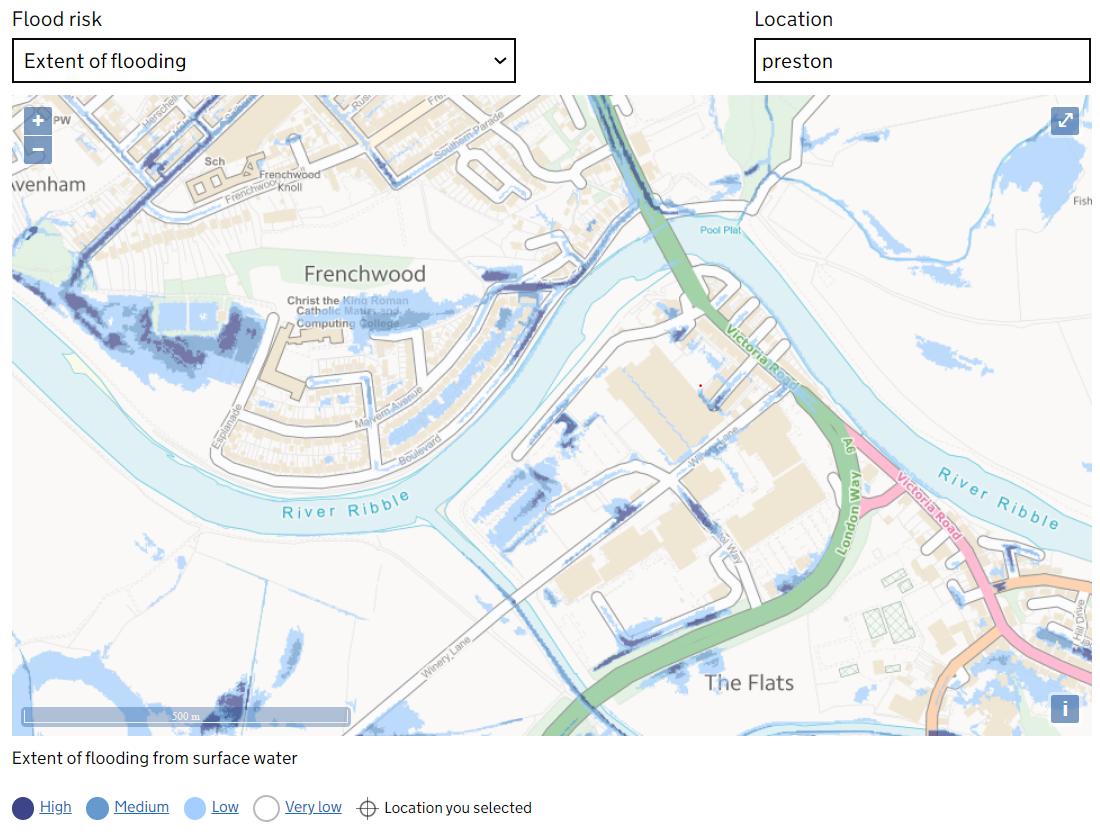
Image from the Environment Agency – Extent of flooding to an area
Periods of long and intense rainfall can cause the ground to become saturated and waterlogged as the ground cannot hold any more water. This causes surface water flooding as the rain has to flow overland instead. It is also the case when the ground becomes dry and baked during summer as rainwater is unable to infiltrate through the hard soil. With climate change predicted to bring warmer and wetter weather, surface water flooding is expected to increase.
As urban areas grow, more green land is developed upon with buildings, carparks, houses, and other impermeable surfaces, such as driveways. This adds to surface water problems and increases the risk of flooding as water is unable to soak through the ground, and instead runs overland.
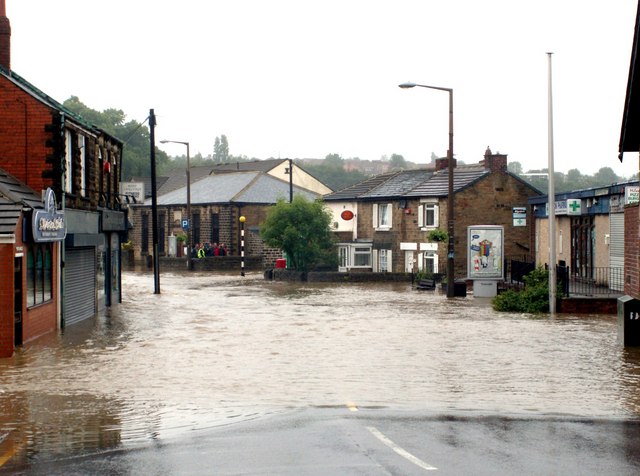
Church Street Darton Flooded cc-by-sa/2.0 – © John Fielding – geograph.org.uk/p/469154
Surface water discharges into highways drains and gullies and these can sometimes become blocked by leaves, litter, silt and waste. Water is unable to drain away quickly enough which leads to flooding. If downpours are intense, they can quickly overwhelm drainage capacity, causing water to back up and surcharge into the surrounding area. As prolonged, wetter weather becomes more common as a result of climate change, historic drainage systems will continue to be overwhelmed as they may lack capacity.
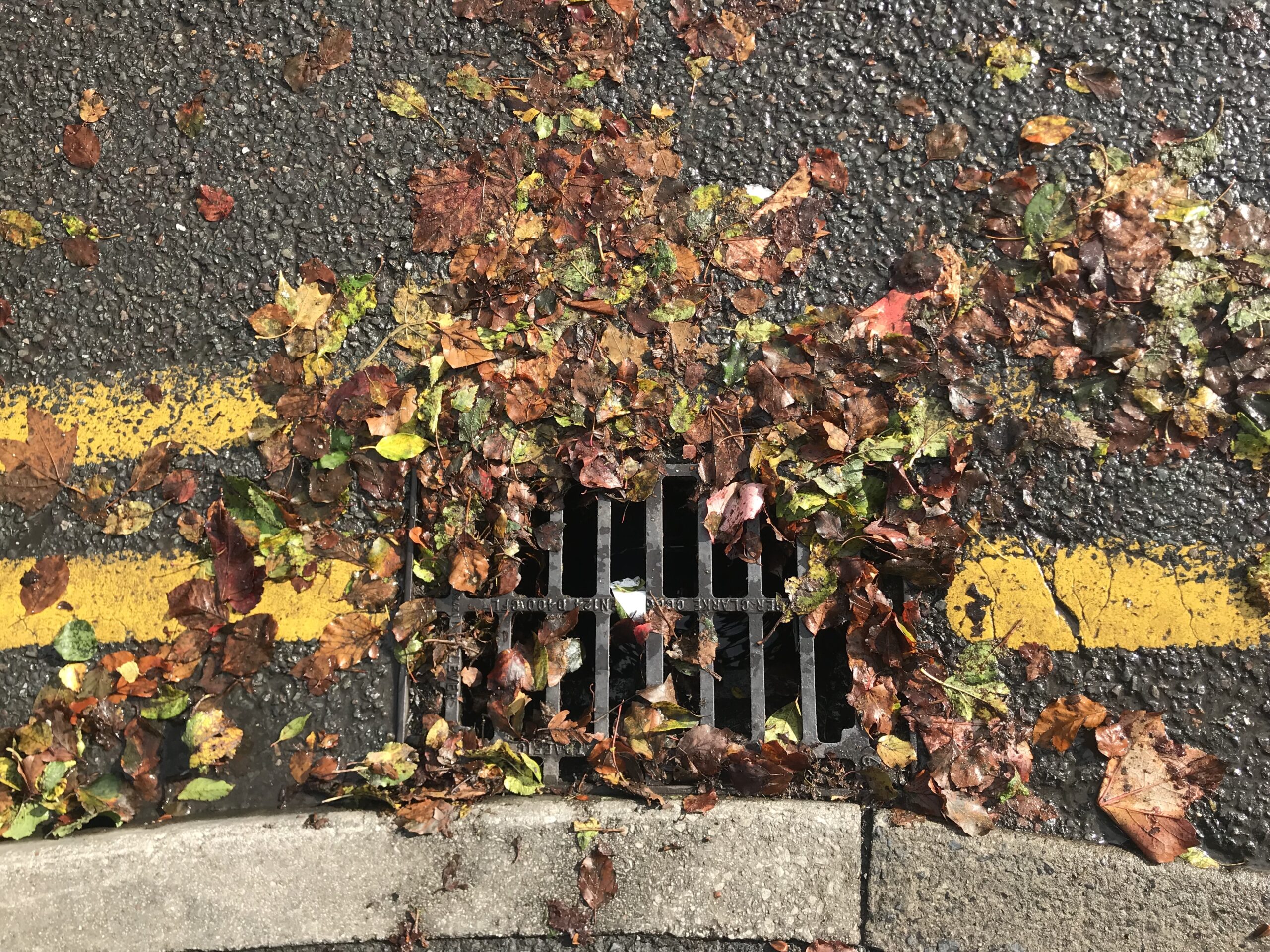
Leaves blocking a drain. Image: The Flood Hub
Areas surrounded by steep sided valleys are more susceptible to flooding as runoff can travel down the steep sides quicker than on flatter land, where it may be intercepted by plants, trees and natural depressions or infiltrate slowly.
There are different ways of managing and reducing the risk of surface water flooding. Natural flood management (NFM) measures reduce the amount of surface water running off hills and valleys by holding or infiltrating it upstream through natural approaches. This reduces the flood risk to downstream communities. Soil management and farming techniques change the way the land is used and managed to reduce the amount of runoff. For more information on these rural techniques, download our resource: click here.
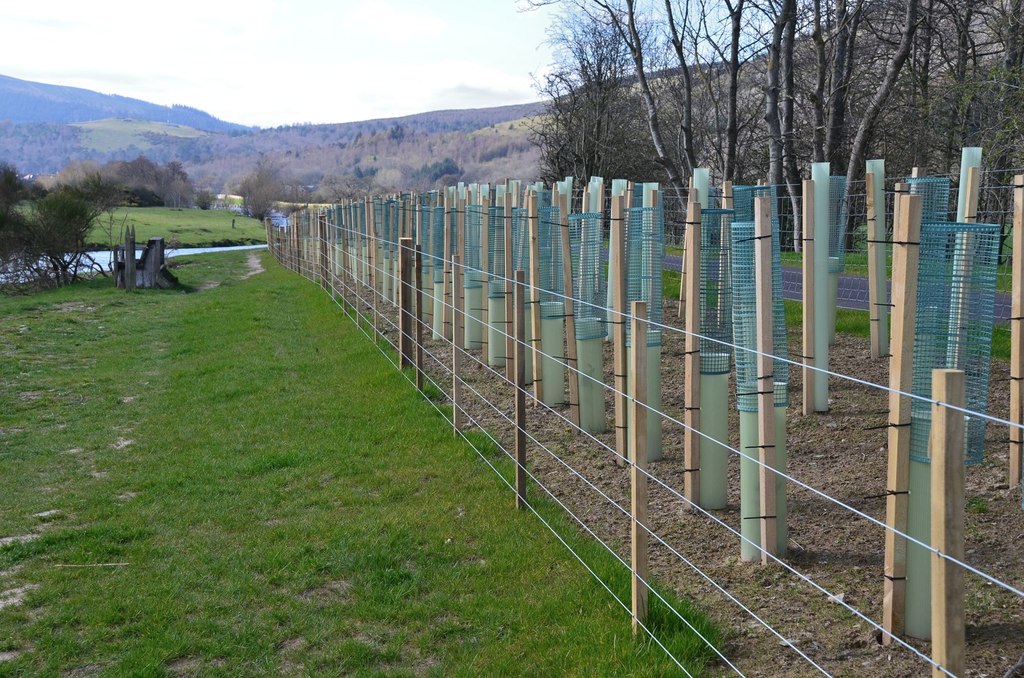
Newly planted trees by Walkerburn cyclepath cc-by-sa/2.0 – © Jim Barton – geograph.org.uk/p/6104424
There are also local interventions which communities and individuals can implement to reduce their flood risk. Sustainable Drainage Systems (SuDS) simulate natural drainage in order to manage rainfall close to where it falls. Information on the different types of SuDS can be found in our booklet which can be downloaded here. Residents can also:
For more information on local interventions to reduce surface water flood risk, click here.
Unfortunately, you are only eligible for the Environment Agency’s Flood Alert and Warning Service if you are at risk of main river or coastal flooding. Therefore, it is important to have an alternative trigger for your flood plan if you are only at risk of surface water flooding. Instead, you can sign up to Met Office weather warnings which will warn you of heavy rain spells that can often lead to surface water flooding. Subscribe to email alerts here: www.metoffice.gov.uk/weather/warnings-and-advice/uk-warnings. There is also an option of community telemetry systems.
Click here to download our ‘3 Steps to Understanding Surface Water Flood Risk’ resource.
All the resources featured in this blog can be found in our ‘Surface Water Flooding Toolkit’ here, which features all aspects of surface water flooding, from how it is caused, to how you can take ownership of your risk, to how it can be reduced!